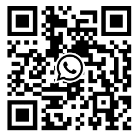
IoT connectivity is a network composed of communication protocols and technologies that enable IoT Gateways, devices, and sensors to exchange data and interact with each other or cloud based platforms. This article will explain the importance of selecting the best Internet of Things connection, explore key factors to consider in the selection process, and provide some suggestions for Internet of Things connection options.
The connection between the Internet of Things and IoT Gateways has unleashed the true potential of intelligent IoT solutions, creating an interconnected ecosystem that provides users with unprecedented levels of control and intelligence.
It is extremely important to choose the most suitable IoT connection option for a specific application. The right choice will ensure the provision of cost-effective and high-performance IoT solutions, interoperability, accessibility, and enhanced user experience.
IoT manufacturers have a wide range of connectivity options. Choosing the correct IoT connection is crucial as it directly affects the success and competitiveness of its products in the rapidly developing IoT market.
Choosing incorrect IoT connections can lead to various issues, including slow data transmission, limited range, increased power consumption, scalability issues, and poor user experience. The correct Internet of Things connection options can ensure that devices that support the Internet of Things can communicate efficiently with other devices and platforms, providing smooth data exchange and improving overall performance.
The choice of IoT connectivity is the most critical factor for the success of any IoT solution. LoRaWAN is the correct choice for IoT connectivity in remote environmental monitoring systems, while Bluetooth may not be a good choice in remote locations. When selecting the appropriate IoT connection for a specific use case, the following factors must be considered.
Scope and Coverage
Evaluate the coverage area required for IoT deployment. Different applications may require short distance connections within a single room, or remote coverage extending several kilometers when deployed in rural or outdoor areas. Consider protocols such as Wi Fi for indoor applications and LoRaWAN for remote outdoor deployment.
Data rate and throughput
Data rate and throughput are key considerations for IoT connectivity. Some applications require high data rates and low latency for real-time processing, while others can run at lower data throughput.
Downlink applications that collect data from sensors or beacons may involve a small amount of data, making them suitable for low bandwidth options such as Zigbee or LoRaWAN. In uplink scenarios where devices transmit data to the cloud or central server, higher data rates become crucial. In this case, connection options such as Wi Fi, Ethernet, or LTE 4G can provide higher bandwidth, ensuring smooth and fast data transmission.
In addition, firmware OTA (wireless) updates are crucial for IoT device management, allowing for remote wireless distribution of software improvements, error fixes, and security patches. Higher data rates and throughput also help to transmit firmware updates faster, reduce the time required for devices to receive the latest enhanced features, and minimize the risk of data loss or interruption.
Bandwidth
Bandwidth is an important aspect of IoT connectivity, referring to network capacity or data transmission rate. It determines how much data can be transmitted within a specific time range.
For applications involving large amounts of data or requiring real-time processing, higher bandwidth is crucial. For example, facial recognition, streaming video, video conferencing, or transmitting high-resolution images require significant bandwidth to ensure smooth and uninterrupted data flow.
On the other hand, some IoT applications may not require high bandwidth. For example, lower bandwidth connections can fully support simple sensor data transmission or low bandwidth telemetry data.
It is crucial to consider cost and compatibility with the current system. Investing in new equipment may not always be feasible or practical. Some companies may find that their existing systems can be upgraded to support IoT connectivity, in which case utilizing IoT Gateways may be advantageous.
Intelligent gateways serve as bridges between existing infrastructure and IoT devices, promoting seamless integration without the need for significant changes or expensive replacements of traditional devices.
Consumption
Considering the power requirements of IoT devices, especially in remote areas, frequent maintenance may increase significant management costs. Energy saving equipment is a wise choice as it helps to minimize battery replacement frequency, reduce operating costs, and ensure long-term operation.
In addition, when evaluating power efficiency, it is crucial to consider various power parameters, including idle power, Rx/Tx power, power saving mode, and power requirements. These parameters determine how much power the solution requires during idle, data transmission and reception, and when using energy-saving features. Bluetooth, Zigbee, and LoRaWAN are known for their low power consumption, which makes them suitable for using battery powered IoT devices in remote or challenging environments.
The performance of IoT connectivity options may vary in various environments, such as indoor, outdoor, rural, or urban environments. Factors such as signal propagation, interference, and coverage should be evaluated based on the specific deployment location to ensure reliable and efficient communication between IoT devices and the network.
For example, connection options such as Wi Fi may be more suitable for indoor applications; And LoRaWAN is a more suitable IoT connection option for remote outdoor deployment in remote areas.
Mobility
Some applications, such as asset tracking and wearable devices, require continuous connectivity even when the device is moving. Cellular technologies such as 4G and 5G are very suitable for such scenarios, providing wide area coverage and seamless switching between base stations. Prioritizing solutions that provide reliable and continuous connectivity for mobile devices is crucial for effective IoT deployment.
Delay
Delay is an important consideration in IoT connectivity, referring to the time delay in data transmission and reception between devices and the cloud. Real time applications such as industrial automation, autonomous vehicle, and healthcare require low latency to achieve optimal performance and safety.
In time sensitive scenarios, this is crucial, even in milliseconds, and high latency can lead to data loss, leading to fatal events. Therefore, it is necessary to consider the inherent latency of different IoT connection options to ensure the optimal performance of time sensitive applications.
Secure
Data security is an important aspect of IoT deployment. Find connection protocols that provide powerful encryption and authentication mechanisms to protect sensitive data and maintain the integrity of the IoT ecosystem.
Scalability
Predict future growth and ensure that the selected connection options can accommodate more connected devices. Scalable protocols such as Zigbee are very suitable for large-scale IoT deployment, allowing for seamless network expansion.
Each IoT connection option has unique value and weaknesses, and the best choice revolves around the precise needs of IoT applications. Carefully evaluate these variables, make good choices that meet project requirements, and successfully implement IoT solutions. Here are some suggestions.
WiFi is perfect for smart buildings
WiFi, due to its high data rate and low latency, has become the ideal Internet of Things connection choice for intelligent automation in homes, offices, and commercial buildings. It allows for real-time control and monitoring of intelligent devices. In most cases, households are already equipped with the necessary Wi Fi infrastructure, making it easier to deploy smart home networks.
The main drawback of Wi Fi is its high power consumption, which can affect the lifespan of battery powered devices. Due to many other protocols and devices operating in similar 2.4 GHz frequency bands, they may face interference. A crowded Wi Fi environment may also affect communication and signal reliability.
Ethernet is widely used in industrial automation and monitoring fields due to its reliability, high data rate, and stability. It provides wired connections that can handle large amounts of data and real-time communication, making it an ideal choice for critical industrial processes and control systems.
The Power over Ethernet (PoE) solution is a convenient and efficient choice for powering IoT devices in industrial applications. It is not only connected through Ethernet cables, but also receives power through the same cable, simplifying installation and reducing the need for additional power.
The main drawback of Ethernet is its reliance on physical cables, which may limit the flexibility of deploying sensors and devices in certain industrial environments. Cable installation and maintenance will also increase overall deployment costs.
LoRaWAN provides low-power operation
LoRaWAN is very suitable for intelligent agricultural applications, especially in rural and remote areas, where remote communication and low-power operation are essential. It enables farmers to effectively monitor their fields and livestock, even in areas with limited infrastructure.
LoRaWAN is a low-cost solution where a single LoRaWAN gateway can connect up to 1000 sensors and provide extensive coverage over a large area without the need for multiple gateways. This scalability makes it an efficient and cost-effective choice for agricultural IoT deployment
The main drawback of LoRaWAN is its limited data rate, which makes it less suitable for applications that require high bandwidth data transmission.
Bluetooth is the most suitable IoT connection option for healthcare IoT applications, especially wearable devices and medical sensors. Its low power consumption, short distance connectivity, and ability to quickly pair with devices make it an ideal choice for continuous patient monitoring and seamless data transmission.
The limited range of Bluetooth is a disadvantage for healthcare IoT deployments that require communication in larger areas. In addition, interference from other Bluetooth devices may affect performance in high-density environments.
Cellular network is the ultimate choice for wide area smart cities
Cellular connections, especially 4G and 5G, are very suitable for IoT connectivity deployed in smart cities due to their wide area coverage, high data rates, and reliability. It can support many smart city applications, including traffic management, public safety, waste management, and environmental monitoring.
The main drawback of cellular IoT connections is their high power consumption, which makes them less suitable for battery powered smart city devices. It may also need to subscribe to a data plan.
Z-Wave adds greater penetration
Z-Wave is very suitable for IoT connectivity in intelligent agricultural applications, especially in rural and agricultural environments. It operates in the sub GHz frequency band, providing greater range and the ability to penetrate obstacles, making it an ideal choice for large farms. Z-Wave's low-power communication ensures energy-saving operation, making it suitable for battery powered equipment in remote areas.
Compared to other protocols such as Wi Fi, Z-Wave has a lower data transfer rate, which limits the amount of data transmitted simultaneously.
Zigbee Intelligent Energy Management
Due to its low power consumption, Zigbee is an excellent IoT connection choice for intelligent energy management applications. It is suitable for battery powered devices such as smart meters and energy monitoring sensors. It allows for reliable and efficient communication between various intelligent energy devices within the local network. Zigbee's mesh network topology enables devices to relay data through adjacent nodes, creating a powerful and resilient network even in challenging environments.
Zigbee's mesh network will increase the complexity of network deployment and management, requiring careful planning to avoid congestion and data bottlenecks.
Internet of Things connectivity is crucial for fully leveraging the advantages of intelligent solutions and real-time insights. Choosing the correct Internet of Things connection can achieve accurate data transmission, high performance, and scalability. Incorrect IoT connections may lead to slow data transmission, limited range, increased power consumption, scalability issues, and poor user experience.
The correct Internet of Things connection will keep oneself ahead of competitors and help to achieve success in the dynamic Internet of Things market.
Contact: Qui
Phone: 18146178586
Tel: 18146178586
Email: qui@zonewu.com
Add: 1501-3, Building F03, Phase III, Software Park, Jimei District, Xiamen City, Fujian Province, China
